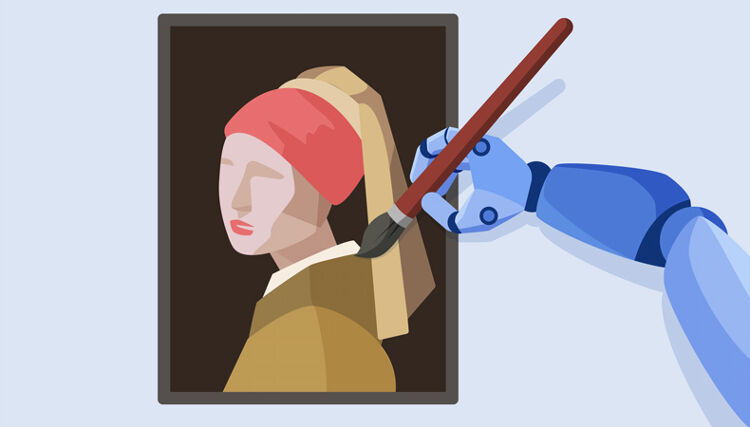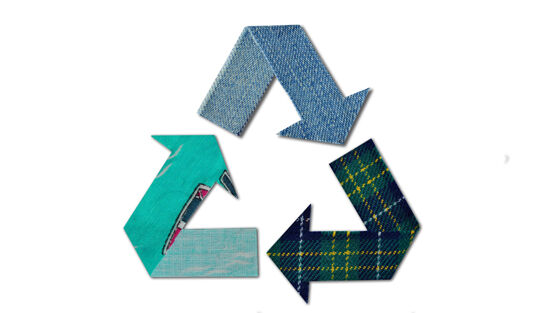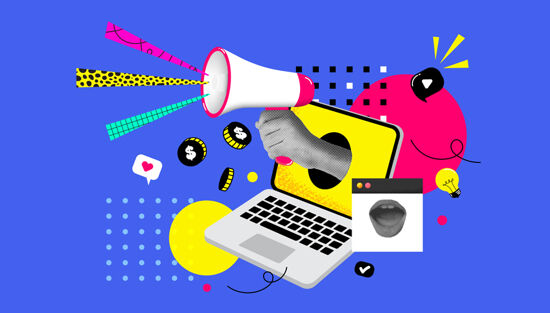Keep it creative: AI and artistry

Artificial intelligence (AI) is inescapable in many walks of life at the moment – but we’re only at the beginning of our understanding of its impact on creativity. From designers through to artists, it’s already showing the potential to disrupt our normal modes of creation – we take a look at whether AI is helping or hindering creatives.
AI has rapidly entered various sectors, including the print industry. While AI offers tools that can enhance efficiency and introduce new capabilities, it also raises questions about the essence of creativity and the value of human input. What is AI’s role in print? What are the benefits, challenges and is human creativity really replaceable?
AI's growing presence in print
AI is now deeply embedded in the print industry, from automated design generation to print-on-demand services. Advanced AI tools can quickly produce high-resolution images, refine print quality and generate customisable content at scale. This has led to an increase of AI-driven print products, particularly in sectors like clothing, personalised merchandise and marketing materials. Platforms such as Gelato have enabled print providers to generate artwork through AI, facilitating mass customisation while requiring minimal design expertise.
While AI democratises design, making it accessible to non-designers, it also raises concerns about a lack of originality in AI-generated content.
The impact on designers and the market
One of the most contentious issues surrounding AI in print is its effect on human designers. Many graphic designers have taken to LinkedIn and other forums to voice frustrations about their devaluation, as businesses increasingly turn to AI for cost-effective alternatives such as Midjourney. Employers are reducing budgets for human-led design, assuming that automated tools can deliver equivalent results. It’s everyone’s worst fears about AI come true – well, apart from that depicted in films such as The Terminator – talented workers being replaced.
At its core, AI’s biggest limitation is that it does not understand creativity, it simply replicates patterns
This raises a critical question: is it a mistake to sideline human designers? While AI can generate high-quality visuals rapidly, it lacks the creative intuition, emotional intelligence and problem-solving abilities that experienced designers bring to the table. AI may produce impressive compositions, but it cannot understand cultural context, brand identity or the subtleties that distinguish great design from generic imagery.
The homogenisation of AI design
Despite AI’s rapid advancements, there is a growing sense that its outputs often look similar. AI-generated artwork frequently features hyperreal aesthetics, surreal compositions and the ever-popular motif of ‘dogs in spacesuits’. These recurring themes highlight AI’s fundamental limitation: it does not create in the way humans do – it imitates and reinterprets existing patterns.
This leads to an unavoidable question: is AI oversimplifying design? If thousands of businesses are using the same AI tools to generate print materials, does that mean originality is being lost?
AI’s reliance on training data means that its creative scope is limited to what already exists. While human artists can challenge norms and introduce truly original concepts, AI is bound by its dataset, reinforcing past aesthetics rather than pushing boundaries forward.
The fleeting nature of AI-generated creativity
A key issue with AI-generated visuals is their transience. AI art is often eye-catching, but does it have longevity? Consider the rise of AI-generated commercials – while visually impressive, they often feel hollow, lacking the depth and storytelling of traditional advertisements. This is a reflection of AI’s creative limitation: it can synthesise, but it can’t conceptualise.
The recent resurgence of ‘AI’s forgotten children’ – older forms of AI that were overshadowed by large language models (LLMs) – further underscores this issue. While LLMs like ChatGPT have dominated AI chatter, they’re not the definitive answer to creativity. Other forms of AI, such as generative adversarial networks (GANs), have played a crucial role in visual art and print design, but their outputs still struggle with originality and feel temporary.
Deepfakes and the ethical dilemma of AI content
Another challenge posed by AI is the ethical dimension of AI-generated visuals, particularly deepfakes. While deepfake technology has been primarily associated with video manipulation, its application in print is equally concerning. AI can now generate photorealistic portraits, logos and branding elements, but is this at the expense of brand authenticity?
Customers deserve to know whether the designs they interact with are crafted by human designers or assembled by an algorithm
For instance, if an AI system generates a stock image of a ‘smiling businessman’, does that image have any real-world significance, or is it merely an illusion of authenticity? As print providers integrate AI into their workflows, ensuring transparency in AI-generated content becomes crucial. Customers deserve to know whether the designs they interact with are crafted by human designers or assembled by an algorithm.
AI vs human creativity: the fundamental difference
At its core, AI’s biggest limitation is that it does not understand creativity, it simply replicates patterns. It doesn’t innovate in the way humans do. Instead, it generates variations of existing ideas. This is why AI-generated art often lacks the deeper emotional resonance that human-created designs possess.
AI creates similarities but not true likenesses. It can produce an image that resembles an artwork by a famous designer, but not the thought process, lived experience or cultural context behind the original. This distinction is crucial in print design, where branding and identity rely on deeply human elements such as emotion, intention and storytelling.
Despite its limitations, AI is here to stay. However, instead of viewing it as a replacement for human creativity, it should be seen as an enhancement tool. It’s not the ‘be-all and end-all’ of creativity. For print providers, the key takeaway is clear: embrace AI for what it does best, but do not undervalue the unique skills of human designers. Creativity cannot be automated, and the future of print will depend on striking the right balance between technological innovation and artistic integrity.
Become a FESPA member to continue reading
To read more and access exclusive content on the Club FESPA portal, please contact your Local Association. If you are not a current member, please enquire here. If there is no FESPA Association in your country, you can join FESPA Direct. Once you become a FESPA member, you can gain access to the Club FESPA Portal.
Topics
Recent news

Regulation guidance: Strategy for Sustainable and Circular Textiles
What is the Strategy for Sustainable and Circular Textiles, what does it include and what does the print industry need to consider now to get ahead of compliance? Sustainability communications specialist Rachel England outlines the key facts.
_1.jpg?width=550)
Lightfastness, climate change and the Blue Wool Scale
UV light fades and degrades printed products over time. And the problem is only going to get worse as global warming increases.

